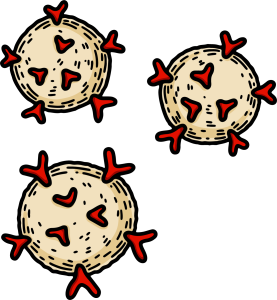
Boost Your Child’s Immunity This Autumn – A Head Start for a Healthier Winter
The brisk winds of autumn will be here soon, and with the cooler months on the horizon, it’s a great time to start thinking about your child’s immune health. A little preparation now can go a long way toward helping them stay strong and healthy through the winter. Below are some simple, natural ways to support your child’s immunity and keep them feeling their best all season long.
Why Start Now?
Even though winter may seem far away, our bodies need time to adjust and build up immune strength. By getting a head start now, you’re giving your child’s immune system a gentle boost before the colder weather sets in. A strong immune system helps defend against the usual colds, flu, and other seasonal bugs—so it’s worth putting in a bit of effort now to enjoy a healthier winter later.
Immune System Basics for Parents
Think of your child’s immune system as a well-trained team of defenders, made up of cells and proteins working around the clock to keep germs at bay. White blood cells are key players on this team, and they rely on good nutrition, consistent sleep, and minimal stress to do their job well. When these elements are in balance, your child’s immune system can respond faster and more effectively to anything that comes its way.
Your Body’s Defence & How the Immune System Works
The human body has an incredible, built-in defence system known as the immune system. It’s constantly on the lookout for harmful intruders—like viruses, bacteria, and other pathogens—and acts swiftly to keep us safe and healthy. But how does it actually work? Let’s explore the fascinating world of immunity.
The First Line of Defence: Physical and Chemical Barriers
Imagine your immune system like the walls and moat of a castle. Your skin is the first line of defence, preventing many pathogens from getting inside your body. Other “barriers” include:
- Mucus membranes in your nose, mouth, and throat that trap potential invaders.
- Stomach acid, which helps break down germs that enter through the digestive tract.
- Beneficial bacteria in the gut that out-compete harmful microbes for space and resources.
Each of these defences works together to stop many germs before they can cause harm.
Inside the Castle: White Blood Cells to the Rescue
Once something sneaks past those physical barriers, it’s up to your white blood cells—the real heroes of the immune system—to jump into action. There are different types of white blood cells, each with its own job:
- Phagocytes (like macrophages and neutrophils)
- These cells act like cleanup crews. They surround and “eat or gobble up” germs or damaged cells, breaking them down so they can’t cause harm.
- Lymphocytes (T-cells and B-cells)
- T-cells coordinate the immune response and can destroy infected cells.
- B-cells produce antibodies—special proteins that recognise and latch onto specific pathogens, making it easier for other immune cells to eliminate them.
DID YOU KNOW?
One of the most remarkable features of the immune system is its ability to remember. Once you’re exposed to a specific pathogen, your body creates memory cells that can utilise a faster and stronger defence if you encounter the same invader again. This is why we often don’t get seriously ill from the same virus twice.
Putting It All Together: How an Immune Response Unfolds
- Germ Invades
A virus or bacterium enters the body through a cut, inhalation, or other means. - Early Warning
Physical barriers like skin or mucus membranes try to stop it. If it passes, the innate immune system is alerted. - Immediate Reaction
Phagocytes rush to the site, swallowing up germs and sending signals that call for backup. - Coordinated Attack
T-cells and B-cells take action. T-cells help kill infected cells, while B-cells produce antibodies to neutralise the pathogen. - Cleanup and Recovery
The immune system clears out the remnants of the battle, and memory cells remain for future protection.
Nutrition: Fuelling Their Immune System
One of the best ways to support your child’s immunity is through a balanced diet. During autumn, you’ll still have plenty of fresh options to choose from. Here are a few tried-and-true staples:
Citrus Fruits
Loaded with vitamin C, citrus fruits like oranges, lemons, strawberries, and kiwi provide a powerful antioxidant punch. Vitamin C helps your child’s body produce white blood cells, which play a big role in fighting infections. Studies have shown that vitamin C may help reduce both the severity and duration of colds.
Try a Rainbow of Fruits and Veggies
Kids often eat with their eyes first, so focus on creating a “rainbow plate” filled with colourful fruits and veggies. The variety of pigments—like beta-carotene in orange carrots or anthocyanins in purple berries—offers an array of immune-supporting vitamins, minerals, and antioxidants. Keep it fun with options like fruit kabobs, veggie sticks paired with a tasty dip (such as hummus or a yogurt-based dressing), or colourful smoothies sweetened with naturally ripe fruits. By turning healthy foods into an appealing, playful experience, you’ll help ensure your child is getting the nutrients they need to support a strong immune system (or try the rainbow smoothie recipe below!)
Leafy Greens & Vegetables
Vegetables like spinach, broccoli, and kale are packed with vitamins A, C, and folate—all crucial for healthy immune function. These nutrients help regulate the immune system and protect cells from damage. Research also suggests that fibre-rich vegetables can reduce inflammation, making them a fantastic addition to your child’s plate.
Probiotics
A well-balanced gut is essential for a strong immune system, and probiotics help maintain this equilibrium. Foods such as yogurt, kefir, and fermented vegetables encourage the growth of beneficial bacteria in the digestive tract. Studies show that a healthy gut microbiome can lead to improved immune responses and lower the risk of certain infections.
How to Tell if Your Child’s Immune System Needs Extra Support
Every child is different, but here are a few signs that might indicate your child’s immune system could use a helping hand:
Frequent Illnesses: Catching colds or other infections more often than usual.
Slow Recovery: Taking longer than expected to bounce back after being sick.
Fatigue: Persistent tiredness, even with plenty of rest.
Skin Issues: Recurring skin problems like eczema or frequent rashes can sometimes point to an immune imbalance.
If any of these signs sound familiar, consider booking an appointment with one of our naturopaths at The Healthy Hormone Naturopath to ensure your child’s immune system is getting the support it needs.
Vitamin D
Spending time in natural sunlight is a great way for the body to produce vitamin D, an essential nutrient for immune function. Even short, supervised periods can be beneficial, as long as you protect your child’s skin if they’ll be outside for longer stretches. Keep exposure times brief, be mindful of peak UV hours, and consider using apps designed to help you find the safest times of day to maximise vitamin D while minimising the risk of sun damage.
The Power of Rest & Sleep
 Quality sleep is an often overlooked but crucial piece of the immunity puzzle. During rest, the body produces cytokines—proteins that help regulate immune responses. Not getting enough sleep can reduce these proteins and leave the immune system vulnerable. Encourage a consistent bedtime routine and limit screens before bed. A well-rested child is better equipped to fight off infections and recover more quickly when illness does strike.
Quality sleep is an often overlooked but crucial piece of the immunity puzzle. During rest, the body produces cytokines—proteins that help regulate immune responses. Not getting enough sleep can reduce these proteins and leave the immune system vulnerable. Encourage a consistent bedtime routine and limit screens before bed. A well-rested child is better equipped to fight off infections and recover more quickly when illness does strike.
Keeping Active & Outside
 Even though the weather may be cooling down, regular physical activity remains one of the best ways to support immunity. Exercise boosts blood circulation, helping immune cells travel more efficiently throughout the body. It can also help manage stress and reduce inflammation. Encourage fun outdoor activities, like bike rides, hiking, or simple backyard games—fresh air and movement work wonders for children’s overall well-being.
Even though the weather may be cooling down, regular physical activity remains one of the best ways to support immunity. Exercise boosts blood circulation, helping immune cells travel more efficiently throughout the body. It can also help manage stress and reduce inflammation. Encourage fun outdoor activities, like bike rides, hiking, or simple backyard games—fresh air and movement work wonders for children’s overall well-being.
By incorporating these simple tips into your family’s routine, you’ll give your child’s immune system a much-needed head start before winter arrives. A balanced diet, good sleep and regular exercise, all add up to a healthier, happier child—and a season with fewer sick days taken off to help them recover!
If you have any concerns about your child’s immune health or need personalised guidance, feel free to reach out us.
Oh, and here’s that Smoothie recipe I promised earlier!!
Rainbow Smoothie
Why it’s great:
- Vitamin-Rich Fruits & Veggies: Pineapple, mango, and strawberries offer a burst of vitamin C and antioxidants.
- Leafy Greens: Spinach sneaks in extra vitamins and minerals without overpowering the fruity flavours.
- Probiotics: Yogurt (or a dairy-free alternative) supports a healthy gut, which is vital for strong immunity.
Ingredients (Makes about 2 servings)
- 1 cup fresh spinach (washed)
- ½ cup pineapple (fresh or frozen)
- ½ cup mango (fresh or frozen)
- ½ cup strawberries (fresh or frozen)
- 1 cup yogurt (plain or vanilla; dairy-free if needed)
- ½ cup milk (or milk alternative)
- Optional: 1 tablespoon of honey for a little extra sweetness
Instructions
- Add Greens First: Place the spinach at the bottom of your blender.
- Layer Fruits: Top with pineapple, mango, and strawberries.
- Pour in the Yogurt & Milk: This helps blend everything smoothly.
- Blend It Up: Pulse a few times, then blend on high until the smoothie is creamy and the spinach is fully incorporated.
- Taste & Adjust: If desired, add honey for extra sweetness. Blend again for a few more seconds.
- Serve & Enjoy: Pour into cups or fun reusable bottles, and let your kids sip away on their fruity, vitamin-packed treat.
And.. here’s a tip to get the kids involved:
By letting them choose which fruits to add or asking them to help measure the ingredients. When kids participate in making their meals, they’re more excited to try, and enjoy what they’ve created!

Enjoy xx
Sarah.

